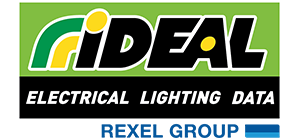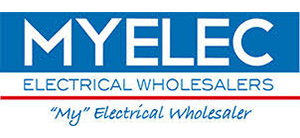In Australia, each state has a different legislation when it comes to smoke alarms. The information below is to be used as a guide only. Please visit the relevant authority in your state for specific legislation requirements.
Legislation requires all NSW residents must have at least one working smoke alarm installed on each level of their home. This includes owner occupied, rental properties, relocatable homes, caravans and campervans or any other residential building where people sleep.
For homeowners
It's the law to have smoke alarms installed on every level of your home.
These alarms must be placed in hallways near bedrooms. If bedrooms are in different parts of the house, you must have alarms installed in each of these locations. If there are no hallways associated with the bedrooms, alarms must be installed between the part of the home containing the bedroom and the rest of the house. You must have smoke alarms on all levels of your home even if there are no bedrooms located on that level.
This includes owner occupied homes, rental properties, relocatable homes, caravans and camper-vans or any other residential building where people sleep.
For tenants
Your landlord is responsible for ensuring your residency meets the minimal requirements of having at least one working smoke alarm installed on every level of your home.
Landlords are responsible for the installation of smoke alarms in rented premises.
Landlords have the right of access to rented premises to fit smoke alarms after giving the tenant at least two days’ notice.
After the tenancy begins, the tenant is responsible for replacing the battery if needed in battery-operated smoke alarms. Hard-wired smoke alarm back-up batteries are to be replaced by the landlord.
If the tenant is physically unable to change the battery the tenant is required to notify the landlord as soon as practicable.
For landlords
Neither the landlord nor the tenant are, except with reasonable excuse, permitted to remove or interfere with the operation of a smoke alarm fitted in the rented premises.
Where a smoke alarm is of the type that has a replaceable battery, the landlord must put a new battery in at the commencement of a tenancy.
After the tenancy begins, the tenant is responsible for replacing the battery if needed. However, if the tenant is physically unable to change the battery the tenant is required to notify the landlord as soon as practicable after becoming aware of the need for it to be replaced.
The tenant is not responsible for the replacement of batteries in ‘hard-wired’ smoke alarm systems that have battery back-up. This is the responsibility of the landlord.
The condition report section of the tenancy agreement must include a specific reference to smoke alarms so that tenants and landlords are able to note and comment on the presence of smoke alarms at the beginning and end of the tenancy.
Owners of residential properties who rent out their premises as holiday accommodation are responsible for installing smoke alarms and replacing batteries.
Other laws apply to boarding houses and backpackers.
For caravans and motorhomes
Caravans and campervans have limited escape options in fire events. You have just a few seconds to get out of a burning caravan, because they are made of lightweight and highly combustible fittings and fires can take off frighteningly fast. So the warning a smoke alarm gives can mean the difference between life and death.
You must have at least one working smoke alarm inside the van where the bed is, and one also in the annex if you sleep there.
Legislation states that the smoke alarm must be fitted with a "hush" button allowing the occupant to silence the alarm for ten minutes.
The smoke alarm must meet Australian Standards 3786 (AS3786) however Fire & Rescue NSW recommends you install a smoke alarm that is powered by a 10 year, non-removable, non-replaceable lithium battery.
To read more visit Fire & Rescue NSW
In Queensland, new legislation introduced on 1 January 2017 specifies the type, positioning, and interconnectedness of alarms, which are critical factors for an early warning and quick escape.
For existing dwellings
From 1 January 2017. When replacing smoke alarms, they must be of a photoelectric type which complies with Australian Standard (AS) 3786-2014.
Existing smoke alarms manufactured more than ten years ago must be replaced. (Note: Smoke alarms should have the date of manufacture stamped on them.)
Smoke alarms that do not operate when tested must be replaced immediately.
Existing hardwired smoke alarms that need replacement must be replaced with a hardwired smoke alarm.
From 1 January 2027. Smoke alarms in all dwellings must:
- be photoelectric (AS3786:2014); and
- not also contain an ionisation sensor; and
- be less than 10 years old; and
- operate when tested; and
- be interconnected with every other smoke alarm in the dwelling so all activate together.
Smoke alarms must be installed on each storey:
- in each bedroom; and
- in hallways which connect bedrooms and the rest of the dwelling; or
- if there is no hallway, between the bedrooms and other parts of the storey; and
- if there are no bedrooms on a storey, at least one smoke alarm must be installed in the most likely path of travel to exit the dwelling.
Smoke alarms must be either hardwired or powered by a non-removable 10-year battery.
Dwellings being sold, leased or an existing lease is renewed
From 1 January 2017. Requirements as for existing dwellings. Existing landlord’s and tenant’s obligations regarding the installation and testing of smoke alarms continue.
Property sellers must continue to lodge a Form 24 with the Queensland Land Registry Office stating the requirements of the smoke alarm legislation have been met.
From 1 January 2022. Smoke alarms in the dwelling must:
- be photoelectric (AS3786-2014); and
- not also contain an ionisation sensor; and
- be less than 10 years old; and
- operate when tested; and
- be interconnected with every other smoke alarm in the dwelling so all activate together.
Smoke alarms must be installed on each storey:
- in each bedroom; and
- in hallways which connect bedrooms and the rest of the dwelling; or
- if there is no hallway, between the bedrooms and other parts of the storey; and
- if there are no bedrooms on a storey, at least one smoke alarm must be installed in the most likely path of travel to exit the dwelling.
Smoke alarms must be hardwired or powered by a non-removable 10-year battery.
New dwellings and dwellings being substantially renovated
From 1 January 2017. The development approval process for new dwellings and substantial renovations will ensure that building approvals received on or after this date will bring dwellings into compliance with the new laws.
Smoke alarms in the dwelling must:
- be photoelectric (AS3786:2014); and
- not also contain an ionisation sensor; and
- be hardwired to the mains power supply with a secondary power source (i.e. battery); and
- be interconnected with every other smoke alarm in the dwelling so all activate together.
Smoke alarms must be installed on each storey:
- in each bedroom; and
- in hallways which connect bedrooms and the rest of the dwelling; or
- if there is no hallway, between the bedrooms and other parts of the storey; and
- if there are no bedrooms on a storey at least one smoke alarm must be installed in the most likely path of travel to exit the dwelling.
To read more, visit Queensland Fire and Emergency Services https://www.qfes.qld.gov.au/community-safety/smokealarms/Pages/default.aspx
In Victoria, smoke alarms are compulsory on every level of every home.
Since 1 August 1997, Victorian law states that smoke alarms (complying with Australian standards AS3786) must be installed in all residential homes, including houses, units, flats and townhouses.
Residential homes constructed before 1 August 1997 need only standalone 9-volt battery powered smoke alarms installed.
Residential homes constructed after 1 August 1997 or have undergone a major renovation or extension, must have smoke alarms connected to 240-volt mains power. In addition a back-up battery must be installed in the smoke alarm.
Residential homes constructed after 1 May 2014 or homes that have undergone a major renovation or extension, where there is a requirement for more than one smoke alarm in the home, all smoke alarms fitted must be interconnected (so that when any alarm activates, all smoke alarms will sound).
It is the legal responsibility of all owners and landlords to install working smoke alarms.
To read more, visit Metropolitan Fire and Emergency Services Board https://www.frv.vic.gov.au/smoke-alarms
All South Australian homes must be fitted with a working smoke alarm.
New Buildings
Since 1 January 1995, smoke alarms have been required in all new homes in South Australia. These alarms must be hard wired to the 240 volt mains power supply unless the dwelling is not connected to such a supply. They should also be fitted with a back-up battery to provide power in case of a mains power supply failure. In dwellings not connected to mains power, smoke alarms powered by 10 year life, non-replaceable, non-removable, permanently connected batteries may be installed.
Existing Buildings
As a minimum requirement all homes where building approval was granted before 1 January 1995 are required to be fitted with a smoke alarm powered by a replaceable battery subject to the following change of ownership conditions.
Change of ownership on or after 1 February 1998
From 1 February 1998, if there is a change of ownership of the land on which any building covered by this legislation is built, the new owner must, within 6 months of title transfer, install smoke alarms either:
- hard wired to the 240 volt household power supply (unless the dwelling is not connected to such a supply); or
- powered by 10 year life, non-replaceable, non-removable, permanently connected batteries.
Home owners were required to comply with the smoke alarm legislation for existing buildings by 1 January 2000.
Interconnection
From 1 May 2014, smoke alarms have been required to be interconnected in all new dwellings.
In existing buildings (approved before 1 May 2014) any extension or addition which requires more than one smoke alarm must have those alarms interconnected however there is not a requirement to interconnect to alarms in the existing building.
Smoke alarms in subsequent extensions will be required to interconnect to any alarms in extensions approved after 1 May 2014.
To read more, visit South Australian Metropolitan Fire Service https://www.sa.gov.au/topics/housing/owning-a-property/smoke-alarms
In Western Australia, mains powered smoke alarms must be fitted in all residential buildings. Smoke alarms with a non-removable ten year battery life are permitted in dwellings where the construction of the building does not permit a space to conceal the wiring and there is no other suitable alternative location or where mains power supply is not available.
To comply with the Regulations, owners must ensure that the smoke alarm(s):
- are in accordance with the Building Code of Australia (BCA) applicable at the time of installation of the alarms. (The BCA specifies the relevant edition of the Australian Standard for residential smoke alarms (AS 3786) and location the smoke alarms must comply with);
- are not more than 10 years old at the time of the transfer of ownership, or making the dwelling available for rent or hire;
- are in working order; and
- are permanently connected to consumer mains power (hard-wired).
The BCA requires smoke alarms to be interconnected where there is more than one alarm. However interconnection of smoke alarms is not applicable to dwellings that were approved for construction prior to 1 May 2015.
To read more, visit Department of Fire and Emergency Services
https://www.dfes.wa.gov.au/safetyinformation/fire/fireinthehome/pages/smokealarmlegislativerequirements.aspx
Beginning in August 1997, smoke alarm regulations in Tasmania have stated that both new residential buildings and residential buildings that have had renovations that necessitated a building permit must have a minimum of one smoke alarm on each level. This smoke alarm must have a direct connection to the electrical supply of that building. In addition, this smoke alarm must possess a battery back-up.
To read more, visit Tasmanian Fire Service
Under Northern Territory law, approved smoke alarms must be installed in all residential premises or movable dwellings. This includes caravans. Home owners must test each smoke alarm at least once every 12 months.
An approved smoke alarm is a photoelectric type smoke alarm that is either hardwired to your home's power supply or has a sealed lithium battery unit with a 10-year life. Hardwired smoke alarms must be installed by a licensed electrician. Battery-powered smoke alarms can be manually installed according to the manufacturer’s instructions.
To read more, visit Northern Territory Government
https://nt.gov.au/emergency/community-safety/fire-safety-at-home/smoke-alarms
















